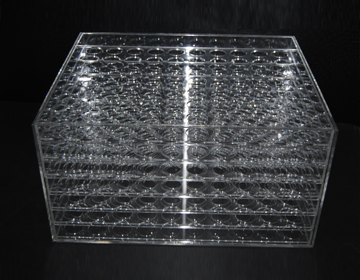Why even choose to produce plastic materials? For starters, plastic fabrication generally has the benefit of having relatively quick finish times, and unlike most materials there’s also the choice of colouring plastic prior to production, as opposed to after. It’s high malleability is the reason why it possesses a reasonably low melting temperature, and it is far more light-weight compared to a number of other materials – both of these factors simplify the development process. Additionally, plastics are relatively inert and thus possess high chemical resistance. Even with these advantages, plastic is nonetheless unsuitable for uses that need a high physical integrity, and is also very vulnerable to depreciation in the long-term.
Introduction To CNC Machining
CNC machining is a computer controlled subtractive approach, that removes material from plastic in an effort to produce the desirable form. The computer is high-tech, with the ability to change a model into figures by using a computer aided design computer software program. The figures are then competent to control the machine to cut the necessary shape. To setup, the pieces of equipment need an intermediate step in the development and validation of tool paths. Once the machine is provided with the tool paths, the subtractive process is started. When the assemblage is finished, the component part is cleansed, smoothed, and cut.
For low volume plastic component part applications that call for tight tolerances and shapes which are tricky to shape, machining is appropriate. CNC machining boasts low to moderate initial costs, and can create high quality plastic pieces with short finishing times. Even so, with increased product intricacy, the price per element increases. On top of that, this process needs tool access allowances, and a number of shapes, including those with curved inner channels, are near-impossible to create with CNC manufacturing.
Vacuum Formation
Vacuum formation is a method in which plastic is heated up and moulded, normally using a mould. The enormity and complexity of vacuum-forming machines vary from cheap desktop technology to sophisticated production equipment.
It is often appropriate for any project, ranging from made to order designs to large-scale manufacturing, considering the large range of machinery available and that automation is undoubtedly an option when necessary. Even so, there’s little freedom in the types of shape it can produce, and is unfortunately only competent to generate components with basic geometries. In comparison to other methods, tooling costs are low, given that vacuum formation only requires low forces and pressures. Generally, for modest manufacturing sizes the moulds are constructed of 3D printed resin, or even plaster, and for higher production sizes stronger equipment made from metal is used. {You will discover several acrylic prototyping website pages in England, if you’re searching to find out more or perhaps even the cost this page is a superb kick off point thermoforming clear acrylic. This site perspex manufacturers has a lot more information on the subject of perspex prototyping.|{For anyone who is interested in more info relating to prototyping plastic products this specific website www.displaydevelopments.co.uk features many more threads concerning plastic manufacturer.
The production method commences with a sheet of plastic material being clamped and heated up until the plastic becomes mouldable. The plastic is then placed into the mould and cooled down, and quite often fans and other chilling strategies are used in an effort to accelerate the cooling process. The final stage involves any excess plastic being removed.

